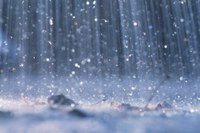Report: When it rains, state's downpours are getting worse
Pennsylvania's heaviest downpours have gotten wetter and more frequent in the last six decades, according to a report released Thursday by PennEnvironment.
Between 1948 and 2011, the state has seen a 52 percent increase in the number of "extreme" storms - those that are among the largest in the state in the last 64 years.
Large storms that used to happen once a year in Pennsylvania now happen every 8 months, the report found. The amount of rain or snow in the largest storm each year has also grown by 23 percent over the same 64-year period.
The findings were based on data from the National Climatic Data Center collected from 3,700 weather stations across the country.
The frequency and severity of Pennsylvania's storms largely matched the average increase of the Mid-Atlantic region, but surpassed the national average, the report found. Extreme storms happened 30 percent more often nationally in 2011 than 1948 and the largest annual storms produced 10 percent more rain or snow.
The report's authors tied the changes in extreme rain events to global warming, which increases evaporation and allows the atmosphere to hold more water, creating a catalyst for bigger storms. The same system also creates longer periods with little rain between big storms and contributes to more frequent and severe drought in parts of the country, the researchers wrote. Nearly 53 percent of the U.S. is currently experiencing moderate drought or worse, according to the National Drought Mitigation Center.
Raymond Najjar, a climate scientist in Penn State's Department of Meteorology, said, "Decades of climate research have led us to the inescapable conclusion that fossil-fuel emissions make the atmosphere warmer, moister, and more prone to producing intense precipitations." He added that it is possible to reduce the most harmful climate impacts through emissions reductions, land-use planning and improved infrastructure.
The report advocated cutting U.S. global warming emissions by at least 35 percent below 2005 levels by 2020, through energy efficiency, renewable energy sources, stricter power plant standards, and clean fuel and transportation options.
The U.S. Energy Information Administration reported Wednesday that U.S. carbon dioxide emissions from energy use were the lowest in the first three months of 2012 than they have been in two decades, due to a warm winter, a lower demand for gasoline and low-priced natural gas displacing coal to generate electricity. Carbon dioxide emissions from energy use decreased 8.7 percent between 2005 and 2011, according to agency data.
Article found on thetimes-tribune.com
Contact the writer: [email protected]

